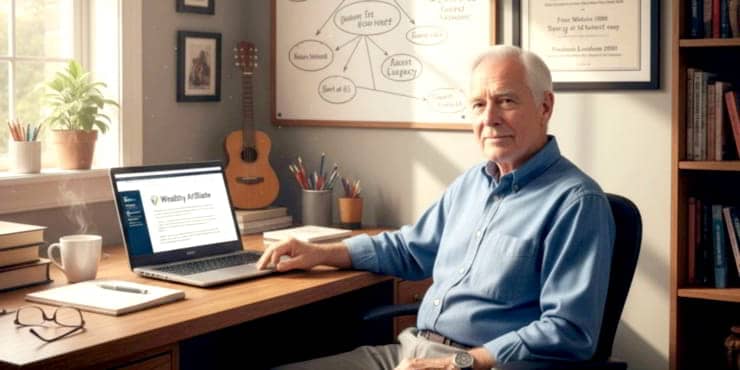Make Your WordPress Site Accessible for All

Estimated reading time: 5 Min
Make your WordPress site accessible and ensure everyone can find their way around smoothly, regardless of their abilities.
WordPress serves as a website platform for readers and content creators alike.
But what good is it if not all can navigate it?
This is about building digital bridges and ripping down any digital barriers.
Of course, each thread on the web should reflect a user requirement.
Accessibility means creating a design that includes all threads, for all readers, creating a complete and inclusive experience.
It’s about considering the breadth and depth of user needs, from those who normally navigate with assistive technologies to individuals facing temporary impairments.
An accessible website is like a well-lit, signposted, and ramp-accessible building. It enables access to more visitors, offering them all the same opportunities and experiences.
In our interconnected world, ensuring digital spaces are welcoming to all is essential.
Overview of Legal and Ethical Considerations
Skirting around accessibility is like ignoring building codes; eventually, there may be consequences.
Beyond the legalities, there’s a moral issue pointing towards inclusion. Failing to adhere can harm your digital reputation, turning potential allies into adversaries.
Consider this: accessibility is the key that unlocks the full potential of the internet for all users.
The Americans with Disabilities Act (ADA) was and remains a milestone in the journey towards equality and inclusion, providing rights for individuals with disabilities since its enactment in 1990.

ADA is a comprehensive civil rights law that prohibits discrimination based on disability, ensuring that people with disabilities have the same opportunities as everyone else to participate in the mainstream of American life.
The ADA covers various sectors, including employment, transportation, public accommodation, communications, and access to state and local government programmes and services.
It’s a societal blueprint designed to build a more inclusive community where every individual, regardless of their physical or mental abilities, is valued and given equal opportunities to thrive.
How To Make Your WordPress Site Accessible
Every user journey should be as seamless as a river flowing to the sea.
A site must be navigable by keyboard alone, with clear signposts and opportunities for rest stops, ensuring no one is stranded or lost.
Text should be as clear as daylight, with fonts that don’t force the eyes to squint or strain.
It’s about choosing clarity over style, ensuring messages are received loud and clear.
Images should whisper their stories to those who can’t see them.
Alt text acts as a narrator, describing scenes to those navigating the web through different senses.
Tools and Plugins for Improving Accessibility
These tools help to guide you towards accessibility.
From browser extensions to apps, they highlight the terrain ahead, showing where to find smooth paths and bridges.
WordPress Plugins for Accessibility
Plugins are the building blocks for an accessible WordPress site.
They are like friendly guides, offering a hand to ensure your site walks the talk of inclusivity.
Choosing the right tools is like picking the right crew for a voyage.
Look for those well-versed in the language of accessibility, regularly updated, and highly recommended by fellow navigators.
Design Considerations for Accessibility
Your site’s colour palette should be as clear as day and night, ensuring text stands out against its background.
Colours should convey meaning, but they should never be the sole messenger.
Your site should fluidly adapt to different screen sizes like water, taking the shape of whatever container it’s in, be it a mobile phone, tablet, or desktop.
The layout is the map of your site.
It should have easy-to-follow pathways and indications to help users navigate the material.
Content Strategy for an Inclusive Audience
Script your words as if they’re to be spoken aloud.
Clear, concise language serves as a guiding voice, ensuring the path through the content is well-lit and easy to follow.
Headings are the signposts of your content.
They should stand out like landmarks, helping travellers navigate the landscape of your information.
Multimedia should whisper its message in multiple ways, ensuring no one misses the story because they couldn’t hear or see the original format.
Testing and Maintaining Accessibility
Testing is the journey of walking a mile in different shoes.
It involves exploring your website from various perspectives, ensuring the path is clear for all.
The path of accessibility is ongoing, requiring regular checks and maintenance.
It’s a commitment to keep the roads clear and the signals strong.
Knowledge is a beacon, guiding your team towards inclusivity.
Educate them on the importance of accessibility, turning individual actions into collective progress.
Case Studies on the Impact of Accessible Sites
Successfully accessible websites act as lighthouses, guiding others towards enlightened shores.
They prove that inclusivity boosts user engagement and broadens audience reach, shining examples of empathy in action.
Search engines are like meticulous librarians.
They prefer well-organized, accessible content, rewarding such sites with higher visibility.
Good accessibility practices align with SEO best practices, leading users and search engines alike through clear, uncluttered paths.
Summary: The Road Ahead for Accessible Websites
Like most other factors on the web, accessibility is ever-changing, like the shifting sands of a desert.
It’s about continuous commitment and adaptation, ensuring your digital space grows more inclusive with each passing day.
Resources abound for those who seek to stay informed and improve, lighting the way towards a more accessible future.
Now, let’s make the digital world a more inclusive place, shall we?
If you’re ready to tear down the barriers on your WordPress site and build bridges of accessibility for all, the time to act is now.
Explore the tools, embrace the best practices, and ensure your website stands as a beacon of inclusivity.
Start by assessing your site’s current accessibility level, and then methodically implement the changes needed.
Remember, an accessible web is not a solo journey; it requires a community of dedicated individuals moving forward together.
Are you ready to join the ranks and make a difference?
Begin today by making your WordPress site accessible to everyone, and let’s pave the way for a web that welcomes all with open arms.
😉
Richard


![Are Wealthy Affiliate Hubs Revolutionising Website & Content Development In [year]? A futuristic and sleek digital workspace designed for website management and content creation - Wealthy Affiliate Hubs](https://ml0yvzumdtic.i.optimole.com/cb:k6B_.1fa14/w:740/h:370/q:mauto/https://solobusinessmind.com/wp-content/uploads/2024/12/A-futuristic-and-sleek-digital-workspace-designed-for-website-management-and-content-creation-Wealthy-Affiliate-Hubs740x370-O.jpg)



